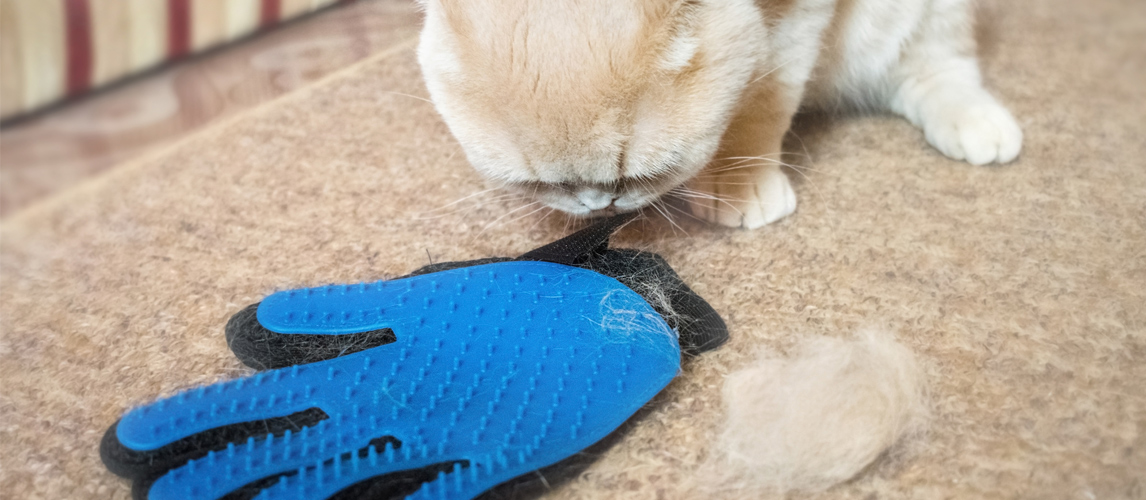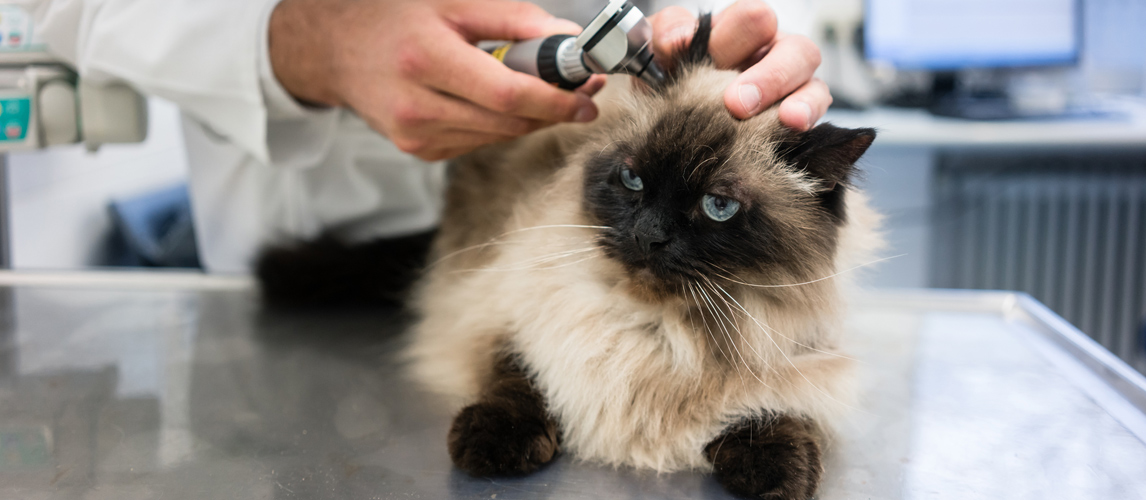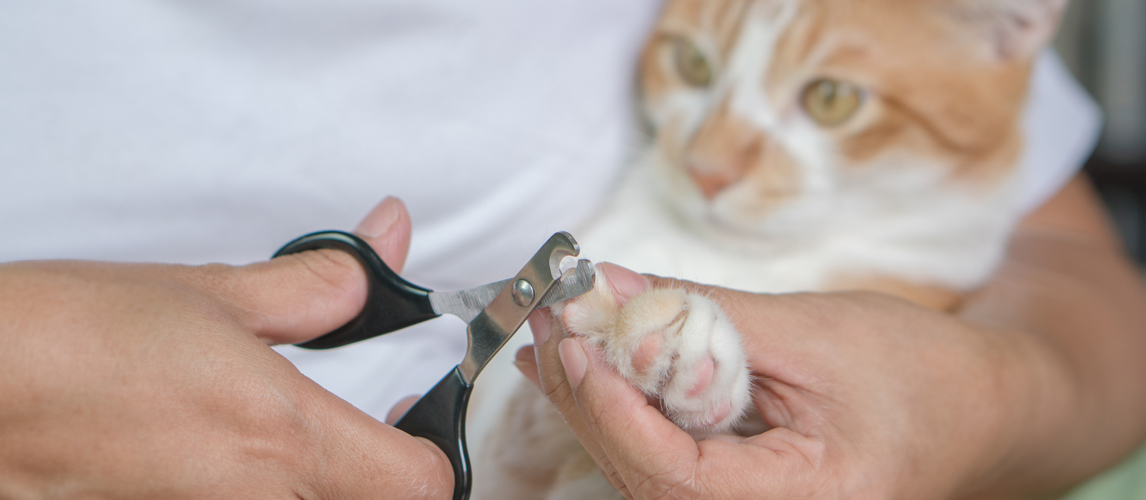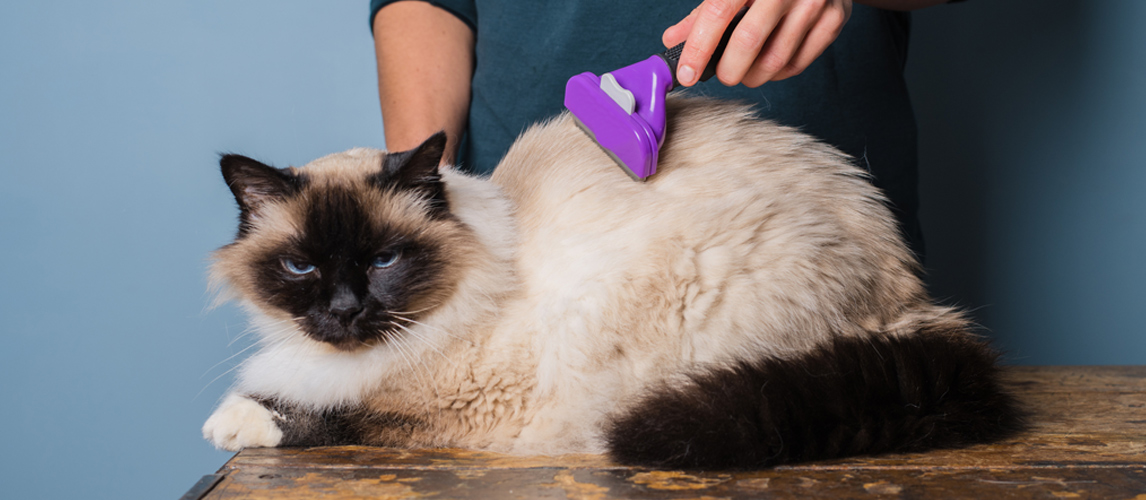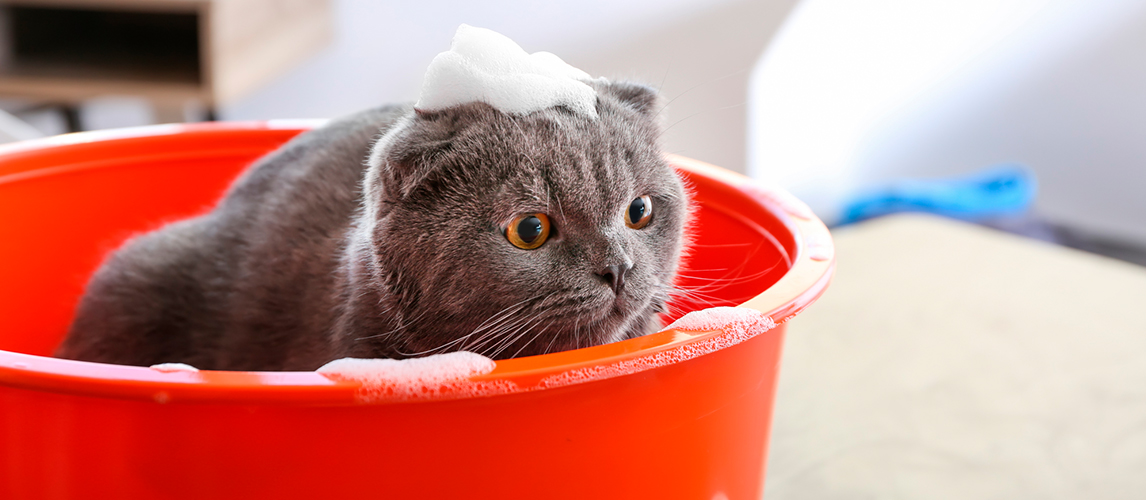Sometimes, cats get that nasty clump of fur that is in dire of TLC. As extremely clean creatures, you can imagine how frustrating it may be for cats who are unable to properly groom this clump away themselves. That’s where we come in! As their constant, human companion, here’s how you can safely demat your cat.
“Matting” refers to the extreme tangling and clumping of cat furs or hairs. It is commonplace for most animals (including humans!) and is never fun to deal with. Seeing as most cats have fur that is likely to mat at some time or another, it is worth knowing the best methods of hair removal when that time comes. If it hasn’t already, that is! Read on for some clever tips on how to keep your curious kitty comfortably primped.
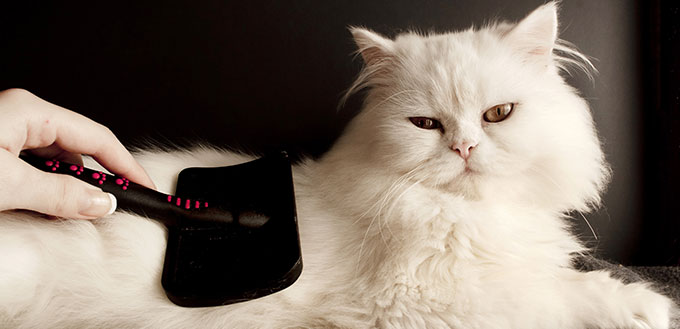
What Causes Matting?
There are several reasons for a cat’s fur to mat. Most of which are natural causes, though some cases include when your cat has rolled in something sticky. The most common causes of matting are typically a result of:
- Loose and Dead Fur
- Skin Flakes
- Skin Oils
- Static Electricity
- Change of Season
- Dry Climates
Though the natural causes are beyond your control, here are a few other causes that you can certainly help prevent:
- Malnutrition
- Skin Irritation
- Allergies
Why is Dematting Important?
If left unattended, matted fur becomes a source of great discomfort or even pain for your cat. It is not just about looking good! Oftentimes, dematting is important to keep your cat feeling happy and healthy. Let us remind you of some of the more severe side effects of matting:
- Stretched Skin: Thick clumps of matted fur can combine with one another and begin to stretch, or break, your cat’s skin in uncomfortable ways.
- Distress: Severe matting can be very distressing for a cat, especially as they are such clean creatures. This anxiety can cause them to groom excessively and potentially hurt themselves. Not to mention this distress negatively affects their mental wellbeing.
- Entanglement: Don’t forget that cats are also natural explorers. If they’re a big fan of slinking through bushes, then their matted fur can easily become caught and entangled!
- Infestation: Matted fur contains dead skin, loose fur, and oils. Therefore, it is a breeding ground for flea and tick infestations. Once they land in that nest of fur, they will stay as long as the fur remains matted.
Can Matting be Avoided?
You can minimize your cat’s risk of matting by simply feeding them a healthy and nutritious diet. Healthy cat nutrition includes plenty of omega-3 fatty acids, as these look after their skin and coat. You must also remember that cats (especially those with long fur) require a good brushing. It is best done once a month, as that can keep the more troublesome areas (like their rear end) under control.
If your cat struggles with allergies, then that may be the cause of hair and skin irritation. Contact your veterinarian for advice on how best to treat this problem.
Matting can’t be completely avoided, but you can minimize the risk by taking some of these above measures. That way, you’ll know how to spot and tackle the issues yourself!
Before You Start
Before you start dematting your cat, you’ll want to identify exactly where the tangles are located. Make sure that your cat is comfortable and calm before doing so. If your cat is already too stressed and jumpy, it will only make dematting more difficult. For example, use the time they spend on your lap or near you on the couch to gently feel through their fur. That way, you can figure out exactly where the fur lump may be. If you have a particularly anxious kitty, be gentle and use plenty of positive reinforcement during this process.
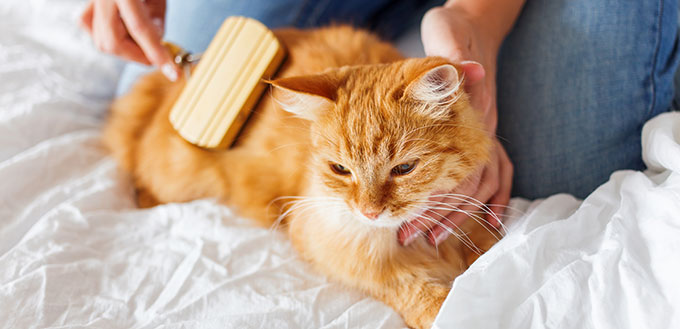
Tips and Tricks
Here are a couple well-known tips that make the dematting process go more smoothly:
- Talcum Powder: By putting a bit of talc powder onto your cat’s matted area and gently massaging it through their fur, you can loosen some of the dead hair. This should help tackle some of the trickier tangles and make the dematting process a bit easier.
- Break it Down: The tangle may be too big to demat with a comb alone. Instead, use a pair of blunt-ended scissors. By cutting through the matted area, you are breaking it into smaller clumps.
Ways To Demat Your Cat
Now that we’ve explored the possible causes of matting, it’s time we bite the bullet and deal with the problem head on. Below are ways to tackle the terrible tangle.
Dematting Conditioners
Sometimes, the best way to deal with a matted clump in your cat’s fur is to condition the mass into submission. We all know that conditioning makes all the difference in avoiding knots in human hair. Why not try it with our cats? There are certainly dematting conditioners available on the pet market to help get rid of those tangles. You can also make homemade cat conditioners using simple ingredients like coconut oil. A bath is another sound option. That’s about as easy as it gets!
Combing Them Out
Take a detangling cat comb and try to ease out the knots. To start, check that the matted area is clearly separated from the rest of your cat’s fur. Next, hold the matted hair at the base, with your fingers as close to your cat’s skin as possible. This tactic will reduce any unnecessary pulling and make the process more comfortable for your cat. Starting from the top of the mat, gently comb through it bit by bit.
Combing out matted clumps requires patience, so don’t rush. If you try to comb the entire mass out in one pull, then your cat is likely to feel pain and gain unnecessary stress. Make sure to take your time, and it will be easier for you both.
Using Clippers or Blunt Nose Scissors
It is extremely important, when using clippers or scissors, that you take every precaution to ensure your cat’s safety. This means only using blunt nose scissors and keeping a guard on the clippers at all times. Cats can be unpredictable. The last thing you want is for your kitty to become spooked and to accidentally clip them, instead of the tangle.
Don’t try to clip large matted areas all at once. Work in small sections so that your cat remains totally calm. If they appear stressed in any way, then it may be better to give them some space and try again later. Using clippers can feel very intimidating, but it is sometimes the only way to remove a particularly bad mass.
When Should My Cat Go to the Groomers?
If you are having a particularly hard time detangling your cat’s mat, sometimes the only option left is to take them to a groomer and let a professional sort it out.
Groomers have treatments and equipment readily available for this exact emergency. Not all groomers are easily accessible, let alone affordable, but as they are trained to deal with all kinds of grooming problems, you can certainly trust them to take care of it. Bringing your cat to the groomer is also the safer option, if you are worried about causing your feline friend accidental harm. You wouldn’t want to pull too hard or clip too closely!
Always make sure that you are completely honest with your groomer. Let them know what may have caused this clump. Furthermore, tell them about any previous attempts you may have done yourself to remove the clumps. Lastly, make sure to warn them about your cat’s temperament in potentially stressful situations, as well as their response to being handled.
Would My Cat Ever Need to go to the Vet for Matting?
When you take your cat to the groomers, they will need to do a full evaluation of the problem. They will likely give you a run-down of time and cost for dematting. If your cat is extremely anxious and difficult to calm down, they may decide the best course of action is to take your cat to the vet instead. There, your cat could be groomed under careful and safe sedation, to make sure the job is done properly.
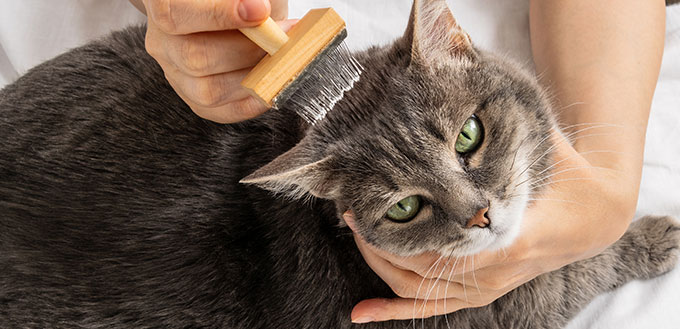
Aftercare
Once your cat’s tangles have been successfully dematted, your cat may have sore skin. Be aware of this during the aftercare process. Respect their sensitivity when going in for cat cuddles! Some cats may find touching and gentle rubs soothing, where others may want you to keep off them for a while. Here are a few aftercare methods you could use in more severe situations:
- Have them wear a cone: If your cat needed sedation to be groomed, they may be better off wearing a cone for a couple of days afterward. This will give their skin a chance to breathe and heal on its own. Wearing a cone will also reduce the risk of your kitty trying to lick or scratch at the dematted spot.
- Give them clothing: If the tangle was shaved down, then it is best to cover the sensitive areas. Dress them in something like a breathable cotton T, which will protect these areas until their hair begins to grow back. That usually takes 1-3 weeks.
- Keep on top of grooming: Now that the matting is taken care of, make sure to keep grooming your cat on a regular basis. This will ensure their fur stays sleek and knot-free.
- VET PRESCRIBED ointments: Though it may be tempting to go out and grab the first soothing ointment you can find, it is important that you only use this type of aftercare if your vet has prescribed it to you. Using ointments without your vet’s authorization could cause further discomfort for your kitty. They could have an allergic reaction to an over-the-counter ointment, after all!
It’s not an easy task to remove matting from a cat’s fur. With the right know-how, you can ensure you are doing your best for your feline friend. Don’t forget to watch for signs of matting in the future and for ones that may have been the cause of the original problem. By keeping on top of this, and your cat’s wellbeing, you can save yourself a lot of trouble!
Sources:
- Grooming your Cat, International Cat Care


